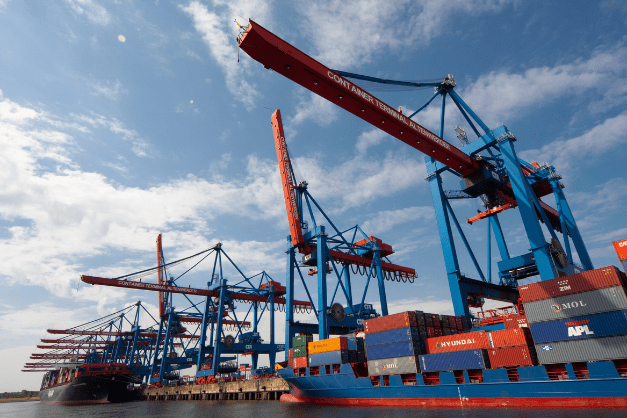In today’s freight forwarding market, expanding your business doesn’t just mean winning new customers. Rather, to sustainably grow your revenue from year to year, you also need to focus on customer expansion. That is, increasing the value of your existing customers through upselling, cross-selling, or growing their accounts. Combined with customer acquisition, this strategy can help you win new expansion deals and retain customers against strong competitors.
“We grew one of our largest and most important accounts through Logixboard. For us being so young in the market, being able to present Logixboard was vital to winning a lot more volume.”
– Farouk Gomati, Vice President of Interworld
In this guide, we’ll dive into how freight forwarders can drive customer expansion for their business, including a step-by-step guide for Logixboard users.
Jump to a section ?
Understanding customer expansion
Customer expansion refers to the process of increasing the value of an existing customer by increasing their spending on a product or service. You can think of it as a step up from customer retention, which is simply keeping a customer loyal to your business.
For instance, imagine that last year, you signed a contract with a new customer to move 800 containers. This year, you set up a meeting with them to see if they’re interested in doing business with you again. If your focus is on customer retention, you might say, “Last year, we moved 800 containers for you from A to B. Would you like us to take those orders again?”
However, if you’re set on expanding that customer’s account, you might say something like, “We moved 800 containers for you last year from A to B, with an X% accuracy rate and X% on time in full. Based on how we’ve worked together, would you like to move 1,200 containers with us this year?”
While you may need to initiate a longer discussion and provide more detailed evidence, making an effort to expand customer accounts can make a big difference in your business trajectory.
Breaking down customer expansion
Driving customer expansion typically comes from focusing on two key metrics: customer churn and share of wallet.
Defining churn ♺
In freight forwarding, churn refers to the rate at which customers stop using a particular service and switch to another provider. This is also known as customer attrition or customer turnover. A high churn rate may indicate that customers are not satisfied with the service provided, or that they’ve found another forwarder who’s a better fit for their needs.
Defining share of wallet ?
Share of wallet is the percentage of a customer’s total spending in a particular category or market that is captured by a specific company or brand. In other words, for a shipper, this would be the total amount of money they spend with one forwarder relative to their entire freight forwarding budget.
When trying to improve customer expansion, you’ll want focus on minimizing your overall churn and growing your share of wallet for each customer. In the software industry, these metrics combine to make up a critical key performance indicator (KPI) called net revenue retention (NRR).
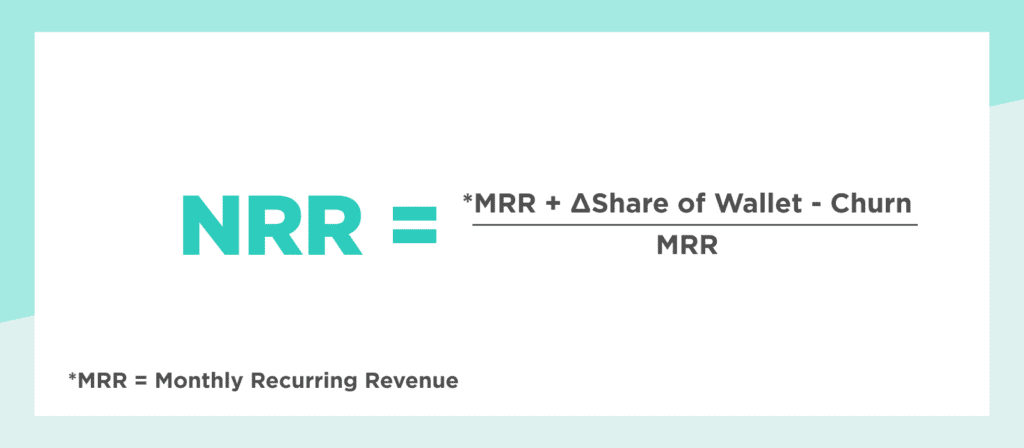
Solving customer expansion, according to researchers
In recent years, researchers have disproven a common misconception about how to make the jump from customer retention to expansion. Many companies tend to assume that improving customer satisfaction is a major driver in increasing share of wallet. After all, if your customers are happier with your product, they should be more likely to keep spending.
However, based on a Harvard Business Review study of 17,000 consumers, this isn’t necessarily the case. Researchers pointed to a case study in which Walmart launched a beautification program across stores called Project Impact. Despite an increase in customer satisfaction, the department store saw a declining share of wallet among consumers.
After a two-year longitudinal study, researchers developed a formula called the Wallet Allocation Rule to determine the share of wallet your company would gain from a given customer. This calculation considered the number of brands utilized by the customer, alongside your business’s ranking in that list. By taking into account both of these factors, you could more accurately assess the percentage of a customer’s wallet that your business was getting, plus how to increase that number.
Why customer expansion matters
In subscription-based industries like software-as-a-service (SaaS), NRR is touted by some as the “metric to rule them all.” This is in part because high retention rates are a great indicator of satisfaction and long-term growth. After all, gaining new business means nothing if they’re all leaving within the next year.
This idea rings true in any industry, especially in freight forwarding. The reason for that? Gaining customers is expensive. In fact, studies have found that it costs 5-7 times more to gain a new customer than to make more sales to existing customers. Therefore, the more you retain and upsell your current customer base, the better your business can grow over the long term.
How to drive customer expansion
The question of achieving customer expansion is relatively complex. How businesses choose to pursue it can vary depending on a range of factors, including industry, product, demographic, and more.
Upselling
Some businesses might aim to increase revenue by upselling customers on additional services. For instance, let’s say you’re on a basic cell phone plan for a two-year contract. Once your contract is up, you’ll be due for an upgrade. The provider could offer the customer a new, higher-end device with additional features, such as a larger screen, more storage space, or a better camera, for an additional monthly fee.
Cross-selling
Another strategy that some companies may employ is cross-selling. This involves offering customers complementary products or services to what they originally purchased. For example, a laptop manufacturer may start producing keyboards so they can sell more to existing customers before they’re back on the market for a new laptop.
Customer retention initiatives
In some cases, businesses may focus on the retention side of customer expansion by launching customer-focused initiatives. This might take the form of loyalty programs, in which vendors will offer rewards or discounts for repeat business. It might also include targeted promotions, in which companies offer customers personalized incentives based on their behavior and preferences.
3 key customer expansion strategies for freight forwarders
As a freight forwarder, typical customer expansion strategies like upselling, cross-selling, and retention will likely come in handy in growing your accounts. However, you need to apply them in a way that fits your customers’ needs. Let’s go over a few key methods that freight forwarders are using to increase their share of wallet.
Offer a wider range of services
Many freight forwarders employ the cross-selling expansion strategy by offering a more diverse array of products and services. For instance, many will start to branch out past their forwarding services into warehousing or customs brokerage. Offering a one-stop shop for all their customers’ logistics needs does more than just increase revenue. It also offers customers the benefit of coordinating with one party instead of juggling multiple service providers.
Focus on building strong partnerships
Building and maintaining strong relationships is critical to success in freight forwarding. That’s why many logistics providers join partnership networks to connect with other supply chain professionals. Through these communities, they can attend virtual and in-person events to build relationships with industry peers across the globe.
As you build better connections, you’ll also want to pay attention to your customer’s individual needs and focus on how to solve them. By creating a personalized approach to each customer, freight forwarders can build a long-lasting relationship that goes beyond just providing transportation services. This approach helps the customer feel valued and appreciated, leading to increased loyalty and repeat business.
Outperform your competitors
It’s no secret that shippers want to work with a forwarder who delivers great results. Evaluate your performance by figuring out where you’re outshining the competition, and where you have room to grow. You can start by going through metrics like on-time in full (OTIF), order accuracy, fee reductions, or any other figures that matter to your customers.
While improving your performance may be easier said than done, one key strategy you can employ is leaning into internal analytics. If you’re already using a TMS solution, you can work with a software consultant to take full advantage of its data collection features. Otherwise, you’ll want to start building a tech stack that enables you to easily collect and analyze data throughout your operations.
From there, you can more accurately pinpoint areas of improvement. By keeping an eye on your efforts and their results, you can get a more focused view of what’s working and what’s not.
“One of our biggest customers has been growing month by month, giving us more volume, and one of the main reasons is because they know we use Logixboard.”
– Farouk Gomati, Vice President of Interworld
As you work to achieve better results, communicate these performance improvements to the customer. For instance, you can send periodic reports or hold regular quarterly business reviews (QBRs) to discuss your partnership. By having an open conversation about how you’re performing, you can build trust and reinforce the value that you’re bringing to their supply chain.
How to use Logixboard to power your customer expansion goals
Expanding your customer accounts, like any business goal, is always easier when you have the right tools in your arsenal. In this guide, we’ll talk about how Logixboard can grow your business through the latter two strategies we discussed– partnerships and data-driven meetings.
Logixboard is a customer experience software that integrates directly with your TMS to provide a user-friendly platform for your shippers. With features like real-time visibility, analytics dashboards, online documents and accounting, and more, this single-pane-of-glass solution enables forwarders to better communicate and collaborate with their shippers.
Let’s get into how Logixboard can drive your team’s efforts to grow your business, step-by-step.
Creating personalized experiences for your customers
Shippers don’t just want a forwarder who can offer them reliable service– they also want it customized to their needs. In a FreightWaves/Logixboard survey, 78% of shippers scored “Customer service and individualized attention” as “Very important” when working with a freight forwarder. We’ve seen catering to this preference yield a lot of success for logistics providers.
In a recent webinar, Neolink director Sean Crook talked about his team’s efforts to push their customers to collaborate more closely. “We have a best practice model that we try to implement with all our customers,” he said. “We know that if we have customers working with us in the way that we want them to be… they can achieve 20 to 30% efficiency gains ahead of the marketplace.”
Part of this benefit comes from Neolink’s partnership with Logixboard to provide customers with enhanced visibility into their shipments. Upon implementing a visibility solution, they’ve leveraged its capabilities to create customized SOPs for their shippers. In other words, they’re combining their advanced technology with freight forwarding expertise to get an edge over their competitors.
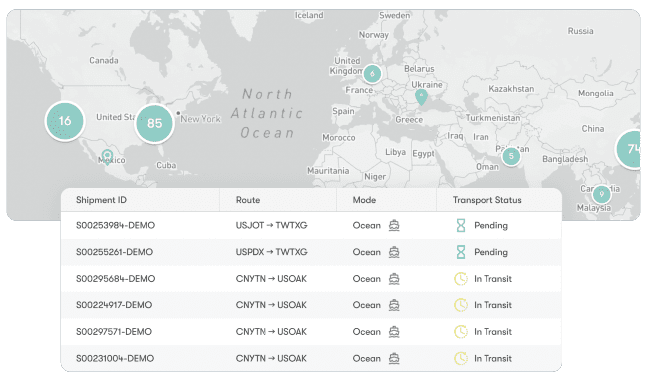
“We have to demonstrate that capability when we do sit down with shippers and try to convince them, like, ‘Hey, there’s all this really cool technology,’” he said.
“There is a there’s a step by step process that we know that there are organizations that if they work in a certain way that they can achieve efficiencies if they’re more nimble on their bookings, and that they are willing to move between different, you know, different shipping lines at the last minute, if it does represent an efficiency game, what you know that those things exist.”
Showcasing your performance with data
Forwarders aren’t just leveraging visibility technology to create customized shipper solutions. Rather, they’re also using features like data analysis to demonstrate how those SOPs are improving their results.
Crook talked about how this capability came in handy in one shipper expansion conversation. “We had a customer recently say… ‘We move a couple of containers a year, and we don’t really provide orders to our freight forwarder,” he recalled.
However, Crook countered by pulling out the transit time data they had on hand. He compared their performance from the last few months and found that Neolink was 15-20% more efficient. From there, he offered to play the spot market for the customer’s factory orders, calculating a savings of roughly $500,000.
When you manage your shipments through a customer experience platform like Logixboard, you can automatically collect and analyze all of your related data. Additionally, through the connected analytics dashboard, you can easily view and compare trends without manually building reports.
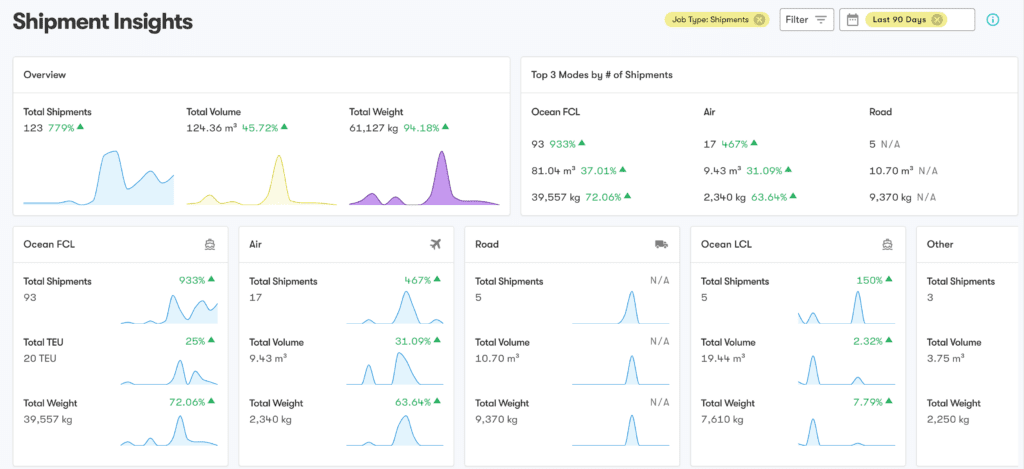
Fostering ongoing trust
Unlike customer acquisition, customer expansion isn’t just about crafting one compelling sales pitch. Instead, it means consistently delivering stellar customer experiences throughout your business relationship. Fortunately, Logixboard enables your customers to continuously check in on how their shipments are moving– both in the moment and over time.
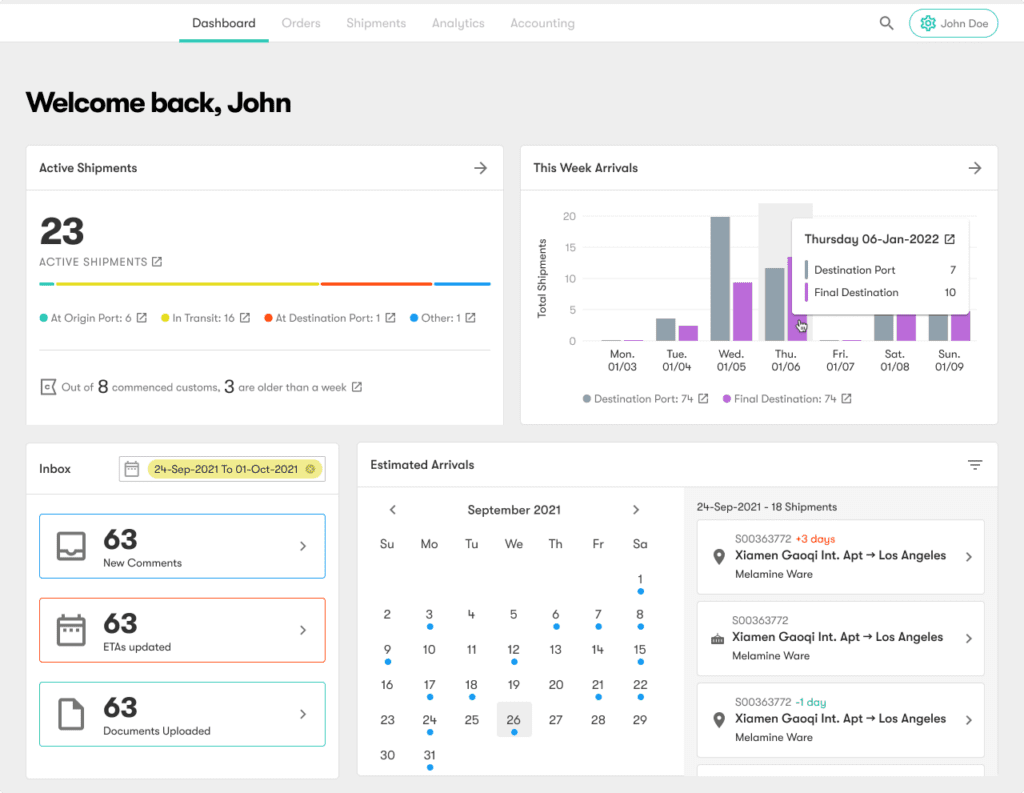
Because you and your customers share the same real-time dashboard view, you can more easily communicate about challenges that come up and how to solve them. Additionally, you’ll be able to build strategies, set goals, and address challenges based on shared information.
Final thoughts
In freight forwarding, customer expansion is key to growing a strong book of business. While there are several strategies you can use to grow your accounts, enabling better collaboration can help you strengthen relationships and reinforce your value to customers.
Want to learn more about how Logixboard can delight your customers and grow your business? Connect with our team to book a free live demo.
READ MORE FROM THE LOGIXBOARD BLOG
 Matt Fleming
Matt Fleming 


